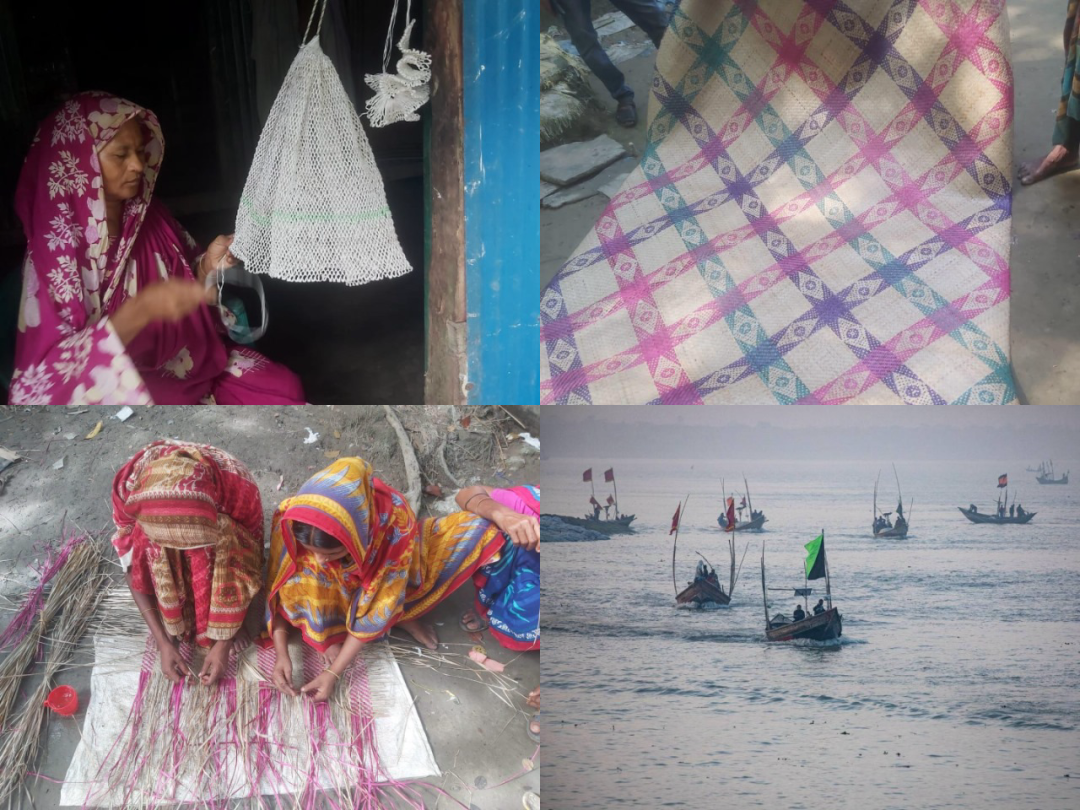Disclaimer:
Please be aware that the content herein has not been peer reviewed. It consists of personal reflections, insights, and learnings of the contributor(s). It may not be exhaustive, nor does it aim to be authoritative knowledge.
Learnings on your challenge
What are the top key insights you generated about your learning challenge during this Action Learning Plan? (Please list a maximum of 5 key insights)
Small islands are particularly vulnerable to climate change, making it imperative to adopt strategies that enhance resilience to environmental shocks.
Engaging local communities, especially, vulnerable women in decision-making processes ensures that development initiatives align with their needs and priorities.
Our strategies mainly aim to empower women in that vulnerable island with economic and financial independence so that they can contribute to the resilience process.
This initiative is encouraging and brings diversification of income sources for local populations to reduce dependency on a single economic activity.
Large number of stakeholders are involved and aware of the challenges identified while analyzing alternative livelihoods for the vulnerable women of this community.
This self-motivated process has brought ownership among the community women for understanding their problems and taking strategic course of action to come out from the situation.
Considering the outcomes of this learning challenge, which of the following best describe the handover process? (Please select all that apply)
Our work has led to significant changes in our UNDP Country Office programming, Our work has led to a significant change in public policy at a national or local level
Can you provide more detail on your handover process?
The action plan initiative has not been matured enough till this phase to meet the handover process. Rationally, we have studied the climate vulnerability and related alternative economic activities compatible for the community women. We been successful to form 3 groups each consisting of 15 vulnerable women. One of these 3 groups has received training on bamboo-handicraft and remaining are yet to receive training on different trends. At this phase, the initiative has connected all relevant stakeholders including local government, local market stakeholders, trainers and others. After the completion of ongoing capacity development training, the women would receive a cash grant of USD 300$ each for starting their own climate adaptative livelihood options. This would work as seed money for investing in raw materials for product making and starting their own entrepreneurship journey. Once this phase is completed, the initiative would link them with the market shareholders and would be carried out by the LoGIC project for further monitoring, improvement and ensuring sustainable impact for climate resilience.
Please paste any link(s) to blog(s) or publication(s) that articulate the learnings on your frontier challenge.
Data and Methods
Relating to your types of data, why did you chose these? What gaps in available data were these addressing?
Since we started the thought process for undertaking activities to this initiative, we were lacking the essential data on the climate vulnerability and the way of resilience of this vulnerable community. We had very obscure data and statistics on the types of natural disaster or the environmental and climate change threats they face, and the options available to them to tackle the life-threatening changes. As we could not fully depend on the previously inherited data which are not viable due their source of collection.
So, we had to choose these data type to minimize the gaps in available data for future forecasting and preparing data-oriented decision making. We conducted back-to-back field visit, observation, sensemaking workshops, small group discussions, one to one discussion, FGD, online meetings, large group discussions, qualitative and quantitative data collection and analysis, and estimation of behavioral data. These data enriched us with the systematic information required for the overall understanding of the Challange and identification of their particular solutions.
Why was it necessary to apply the above innovation method on your frontier challenge? How did these help you to unpack the system?
This initiative was a necessary innovation method to address the frontier challenges of climate vulnerability and economic instability along with poverty that the community women they face in their day-to-day lives. This provides vulnerable women with new skills and knowledge to diversify their income sources, reducing dependence on a single, often unstable, source of income. And while in financial crisis during the climate calamities, this method would equip women with the skills needed to start and manage their own businesses, fostering entrepreneurship and economic independence. At the same time, it encourages the formation of support networks among women, enhancing community resilience and solidarity promoting the adoption of environmentally sustainable practices in new livelihoods, ensuring long-term viability. Most importantly, it builds resilience to economic and environmental shocks by providing women with adaptable and sustainable livelihood options.
This innovative method not only empowered women but also provided a comprehensive understanding of the systemic issues at play. By fostering a holistic, inclusive, and sustainable approach, it helped unpack the complexities of the system, paving the way for more effective and enduring solutions, connecting all level of stakeholders.
Partners
Please indicate what partners you have actually worked with for this learning challenge.
Please state the name of the partner:
1. Bangladesh Tourism Board
What sector does your partner belong to?
Government (&related)
Please provide a brief description of the partnership.
Being one of the top collaborators of UNDP, BTB providing technical and logistic support to our interventions.
Is this a new and unusual partner for UNDP?
Yes
Please indicate what partners you have actually worked with for this learning challenge.
Please state the name of the partner:
2. Upazilla Parishad of Hatiya
What sector does your partner belong to?
Government (&related)
Please provide a brief description of the partnership.
Main actor in implementing the intervention and leading the connections for sustainable tourism and creating informal employment by engaging all other relevant stakeholders
Is this a new and unusual partner for UNDP?
No
Please indicate what partners you have actually worked with for this learning challenge.
Please state the name of the partner:
3. Tour Operators Association of Bangladesh
What sector does your partner belong to?
Private Sector
Please provide a brief description of the partnership.
As TOAB works for tourist management and tourist services they will collaborate with us on sustainable tourism development.
Is this a new and unusual partner for UNDP?
Yes
Please indicate what partners you have actually worked with for this learning challenge.
Please state the name of the partner:
4. Mangrove Conservation Committee
What sector does your partner belong to?
Civil Society
Please provide a brief description of the partnership.
This committee will work as an agent to conserve biodiversity and protect the forestland of the island while promoting sustainable tourism.
Is this a new and unusual partner for UNDP?
No
End
Bonus question: How did the interplay of innovation methods, new forms of data and unusual partners enable you to learn & generate insights, that otherwise you would have not been able to achieve?
Please upload any further supporting evidence / documents / data you have produced on your frontier challenge that showcase your learnings.
The closing form saves automatically or via the blue "save changes" button the top left. Thank you


 1No poverty
1No poverty 8Decent work and economic growth
8Decent work and economic growth 9Industry, innovation and infrastructure
9Industry, innovation and infrastructure 10Reduced innequalities
10Reduced innequalities 11Sustainable cities and communities
11Sustainable cities and communities 13Climate action
13Climate action
Comments
Log in to add a comment or reply.